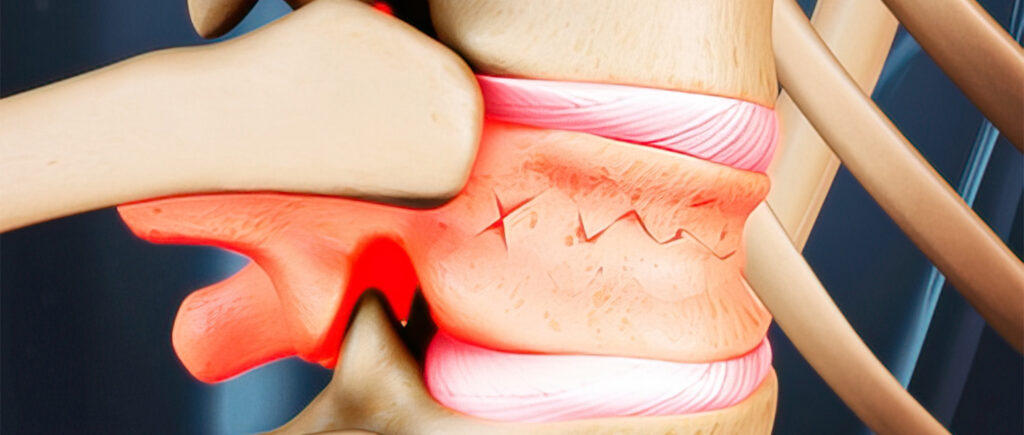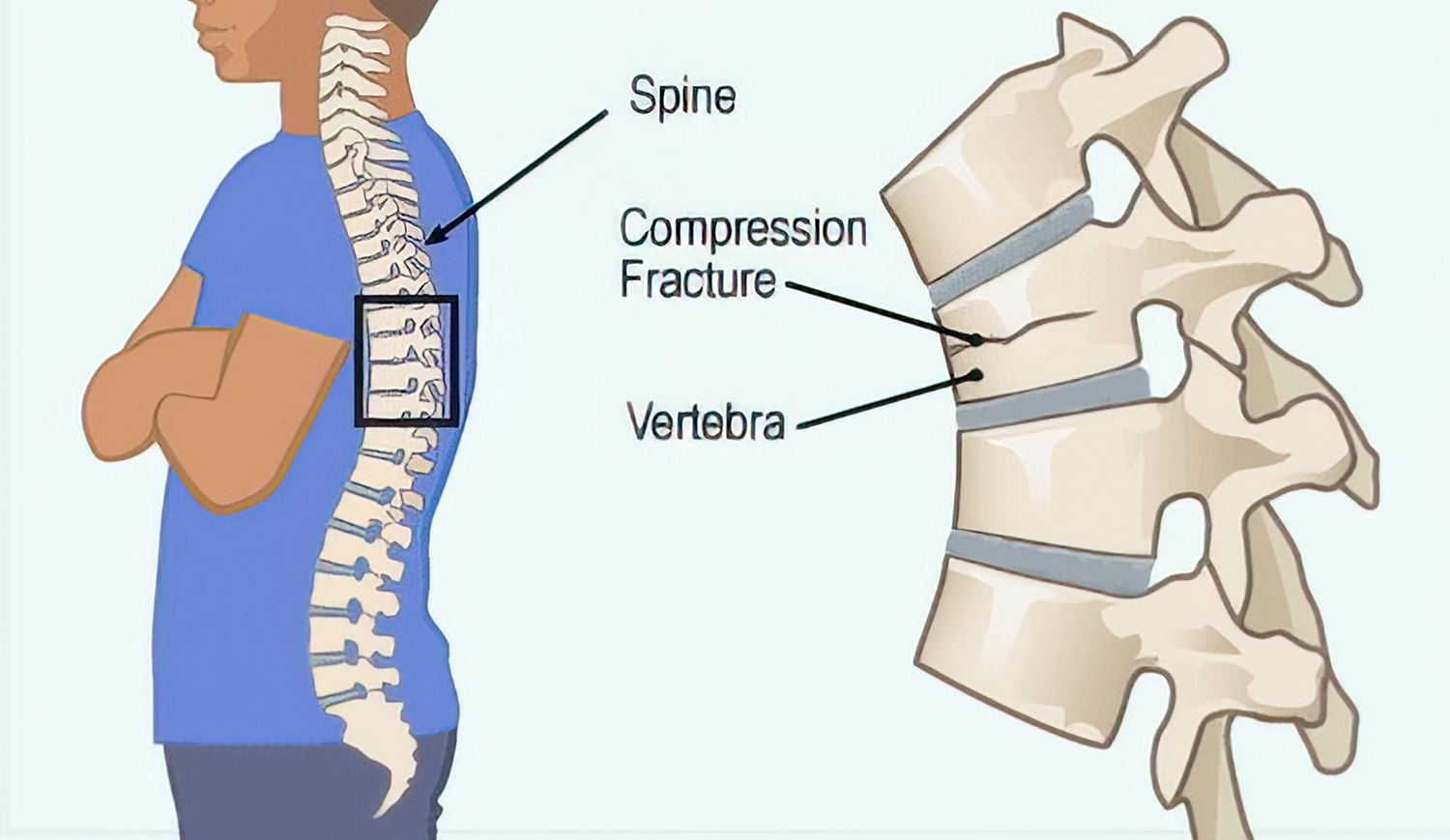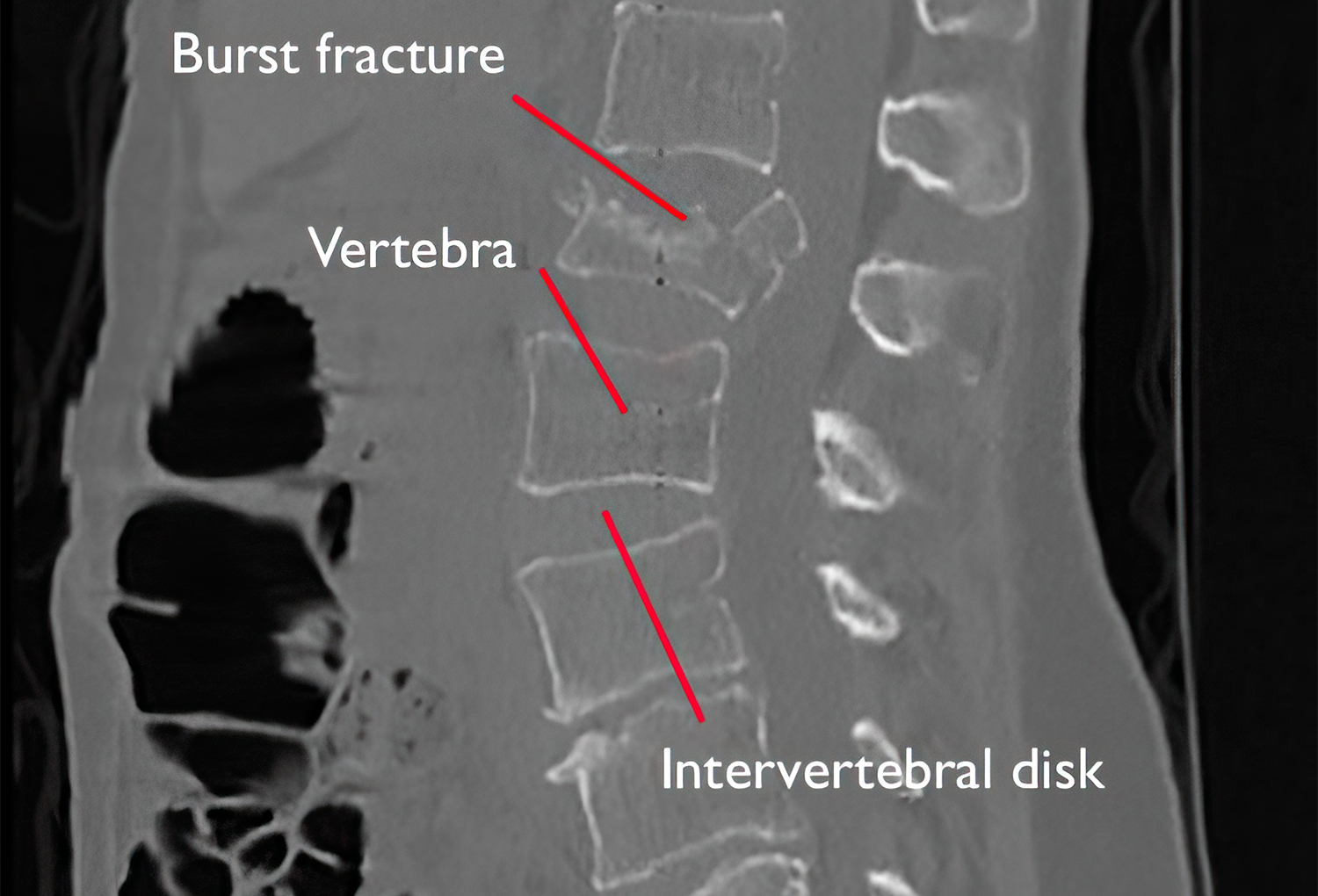BACK FRACTURE

What is a Back Fracture?
A vertebral compression fracture (back fracture) occurs when the normal vertebral body of the spine is compressed. Therefore, the bone collapses when too much pressure is placed on the vertebrae. This results in pain, limited mobility, loss of height, and spinal deformities. In severe compression fractures, though, the vertebral body is pushed into the spinal canal. Therefore applying pressure on the spinal cord and nerves.
Vertebral fractures result from a weakened spine. However, it is caused by:
- Imperfect osteogenesis is a hereditary disease, that results in bone fragility.
- Osteoporosis is a disease in which bone density deteriorates.
- A spinal Tumor is an abnormal mass of tissue that surrounds the spinal cord.
- Trauma is damage to the spinal cord caused by injury.
It’s common to experience severe pain in the back. This worsens when standing or walking and decreases when resting. Other symptoms such as weakness, and numbness in the affected areas, disability, limited spinal mobility, and loss of overall height may occur. The symptoms which indicate multiple fractures in the spine are as follows:
- Hunchback
- Bulging stomach
- Shortness of breath
- Hip fracture
- Gastrointestinal problems.
Patients who sustain multiple compression fractures may have hunchback (kyphosis or “dowager’s hump”), gastrointestinal problems, hip pain, and shortness of breath.
Your doctor may require diagnostic tests such as an X-ray, MRI scan, and bone scan which help to determine and confirm the fracture

Treatment Options
The treatment for vertebral compression fractures reduces the pain while stabilizing, and repairing the fracture. The non-surgical measures include medications, back braces, bed rest, and exercise.
Nonsteroidal anti-inflammatory drugs relieve bone, muscle, and nerve pain. Back braces are used to support the back and immobilize movements.
Surgery is necessary if the pain persists despite conservative treatments. There are two common minimally invasive surgical procedures, such as:
- Kyphoplasty: In this procedure, a deflated balloon called a bone tamp is injected into the spine. The balloon is inflated until it expands to the desired height. The created space is then filled with orthopedic cement (polymethylmethacrylate.) This procedure helps to restore the vertebrae’s height and reduces the deformity.
- Vertebroplasty: This technique involves injecting polymethylmethacrylate, into the collapsed vertebra. The injected cement hardens quickly stabilizing the fracture, relieving pressure, and preventing further collapse.

